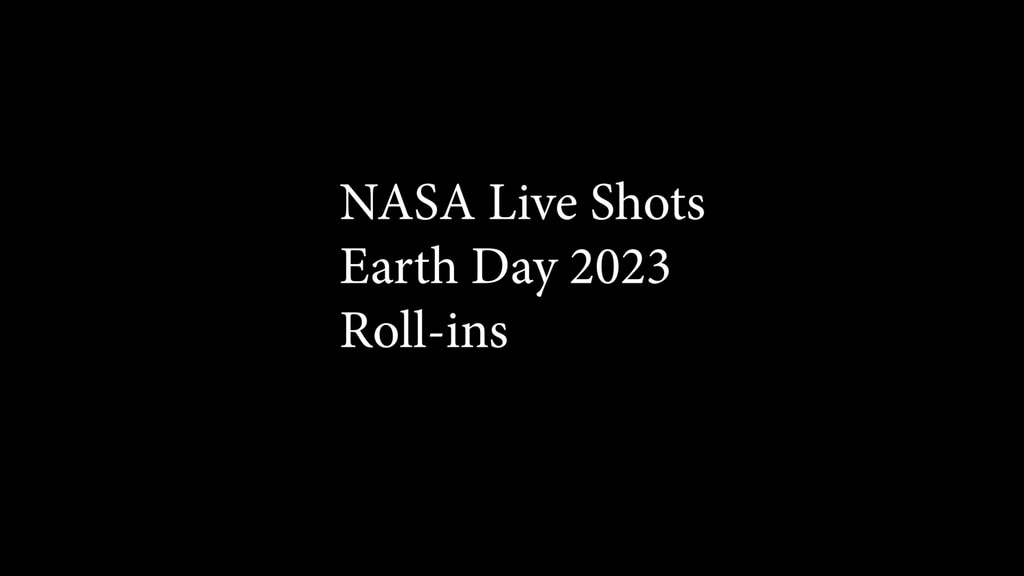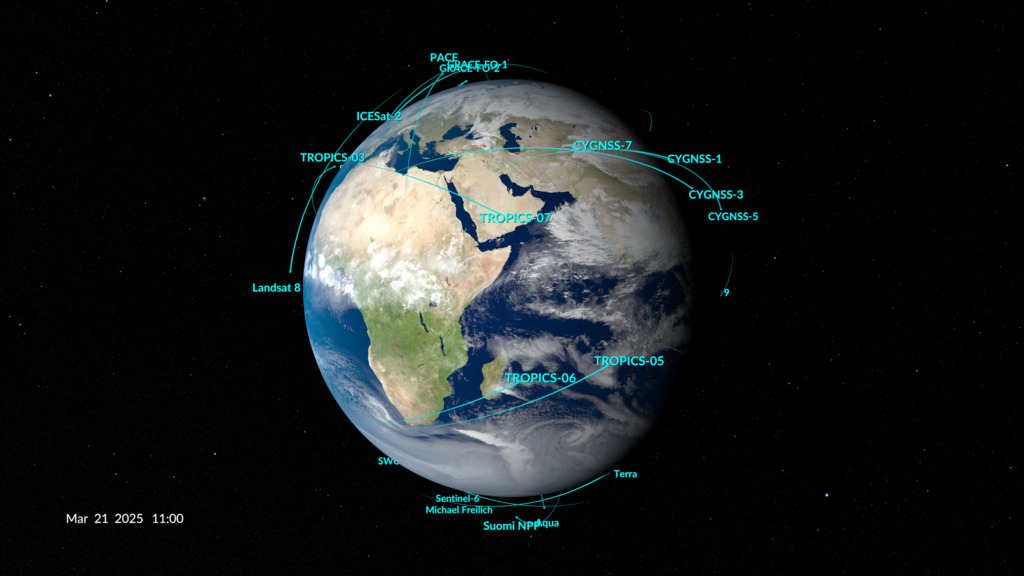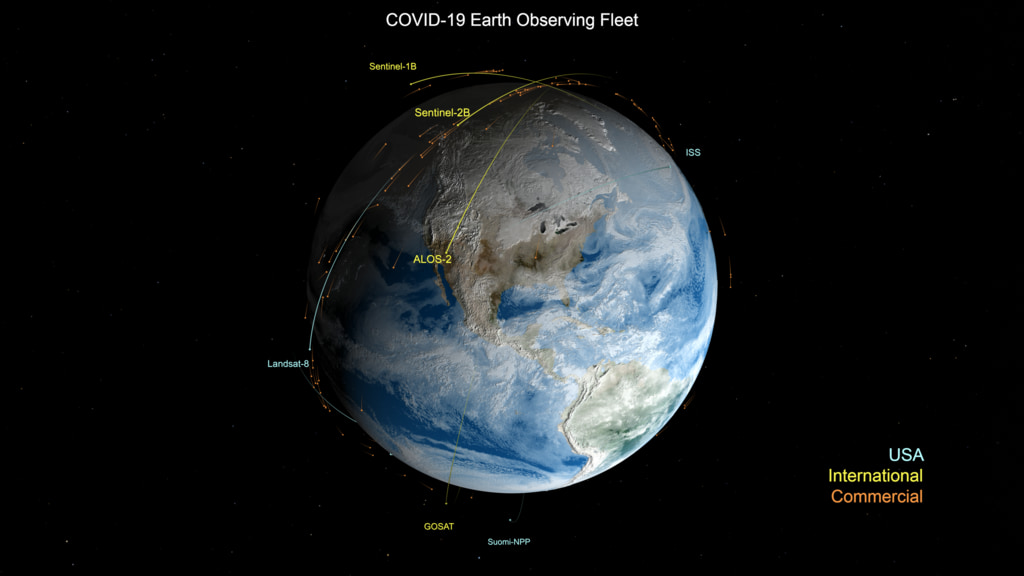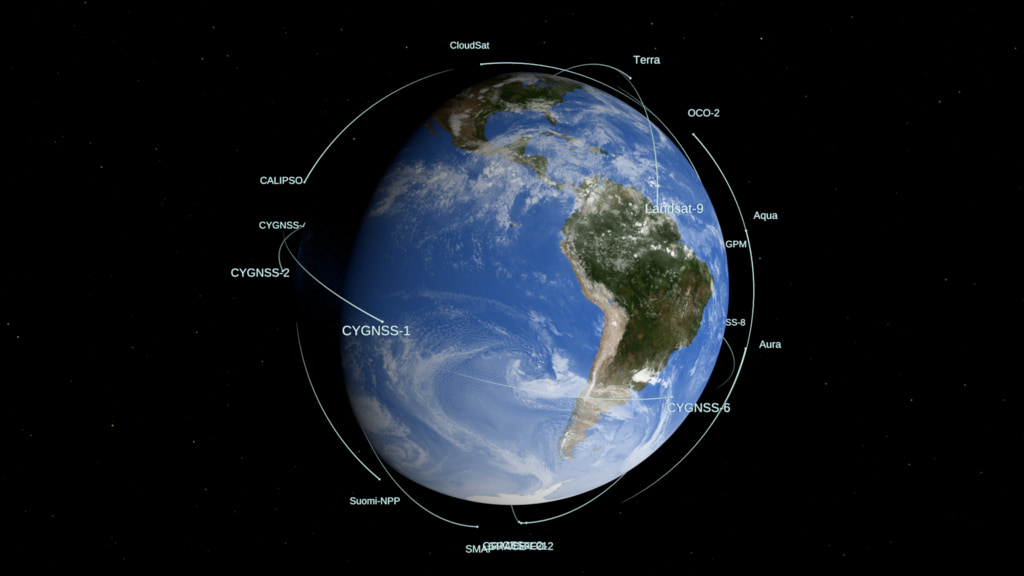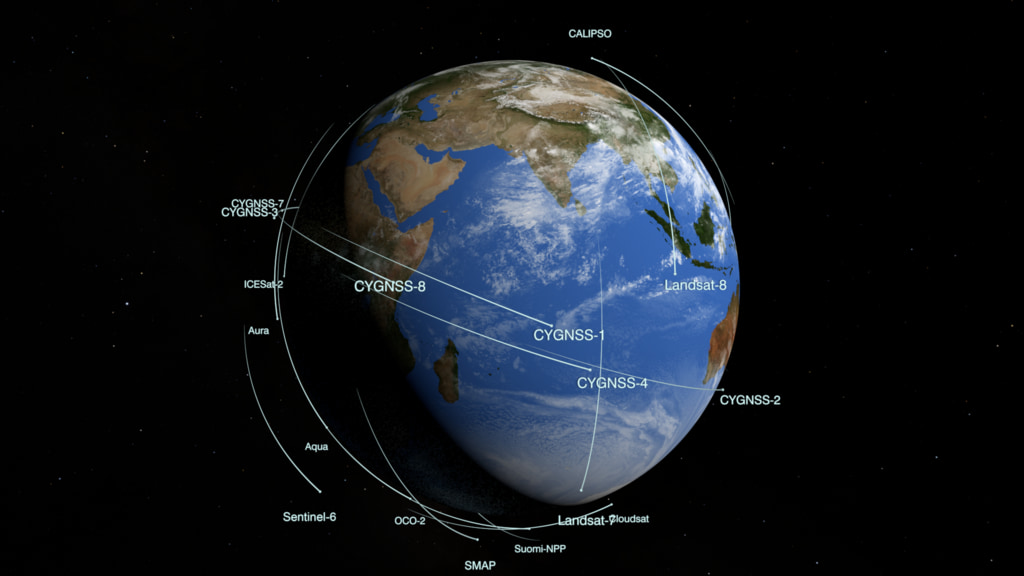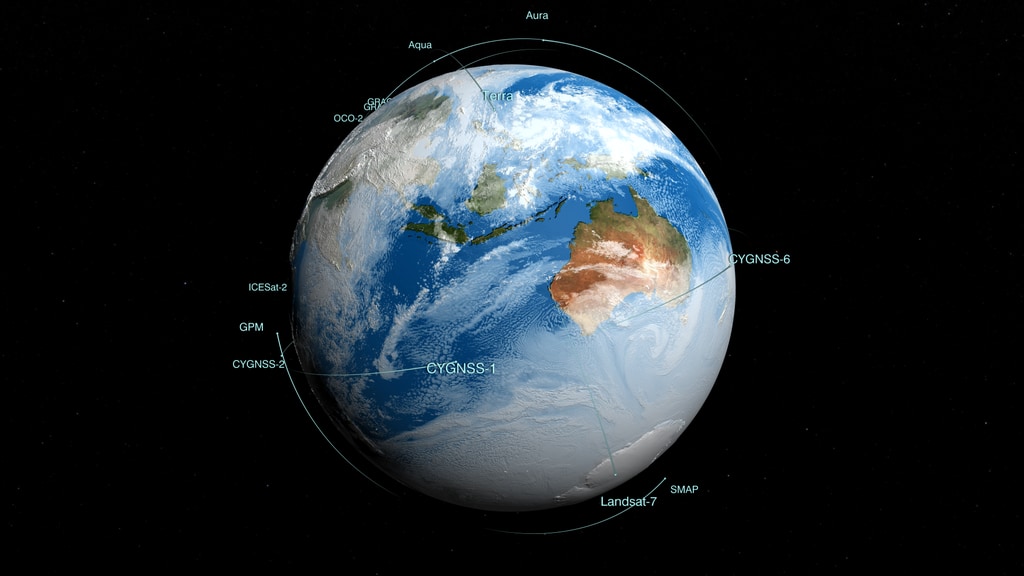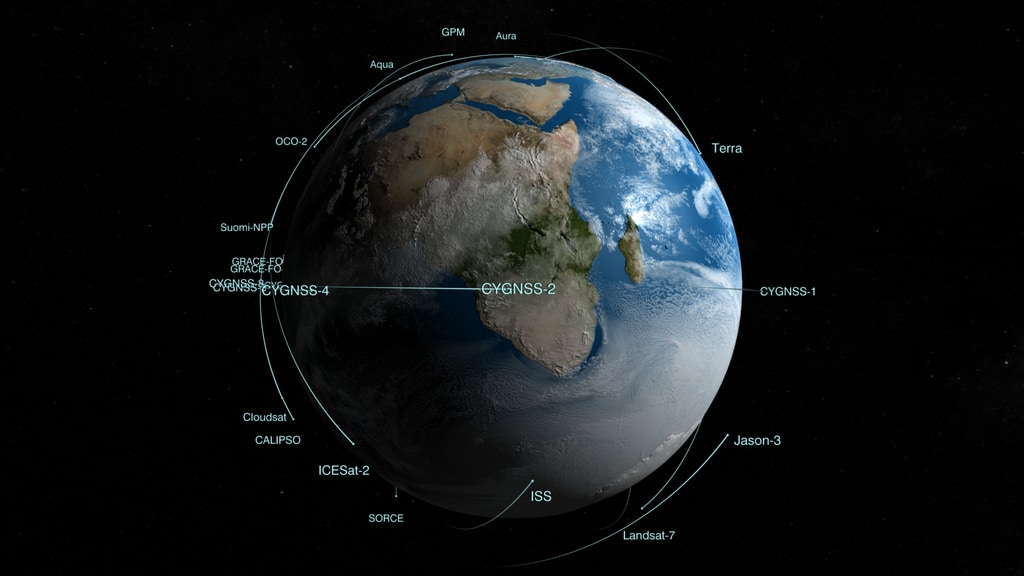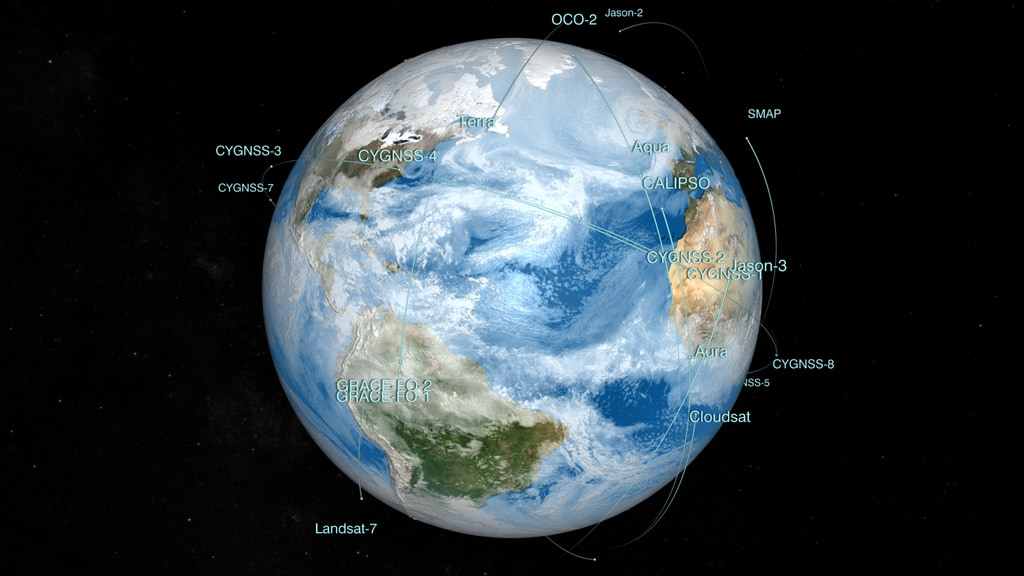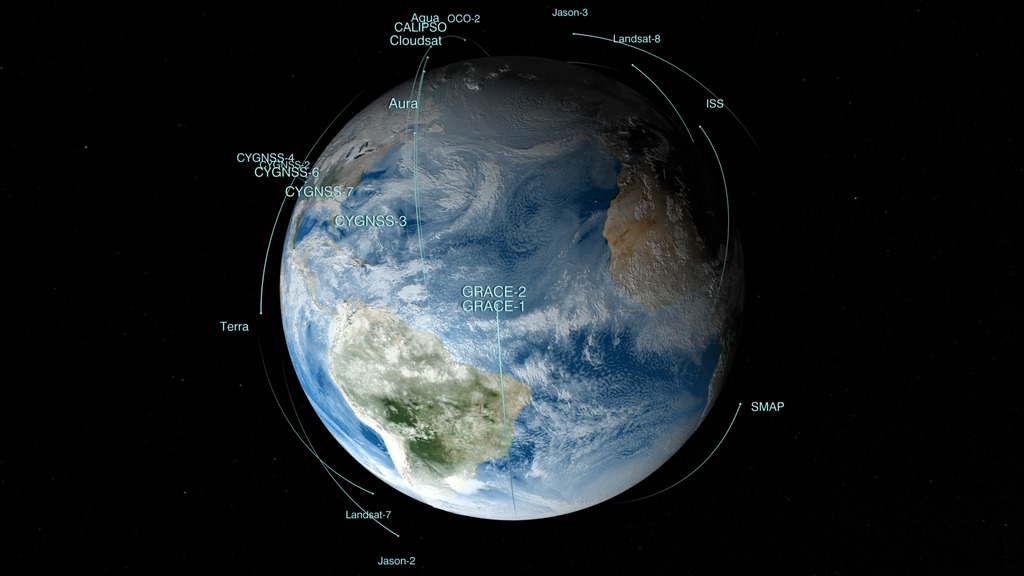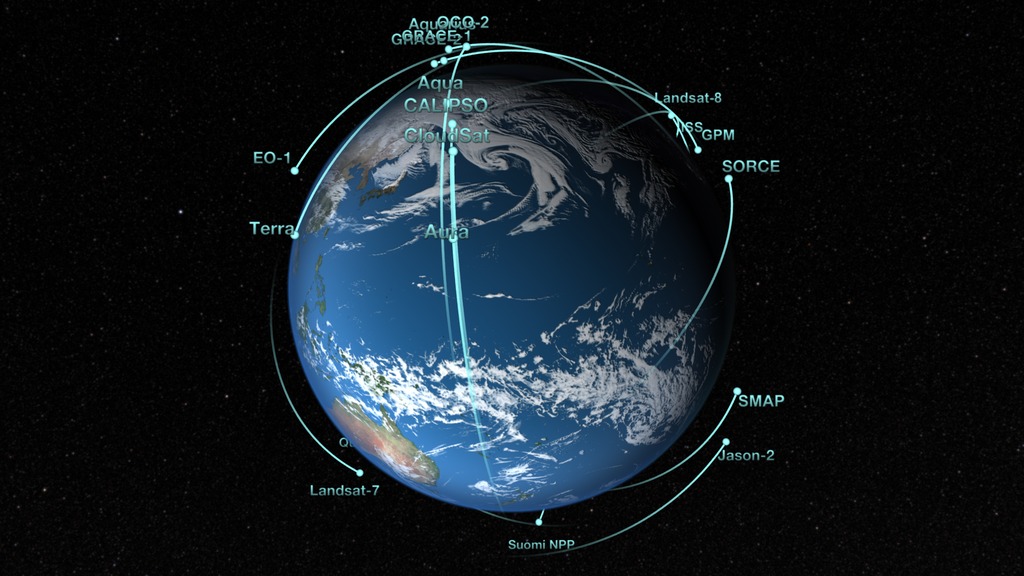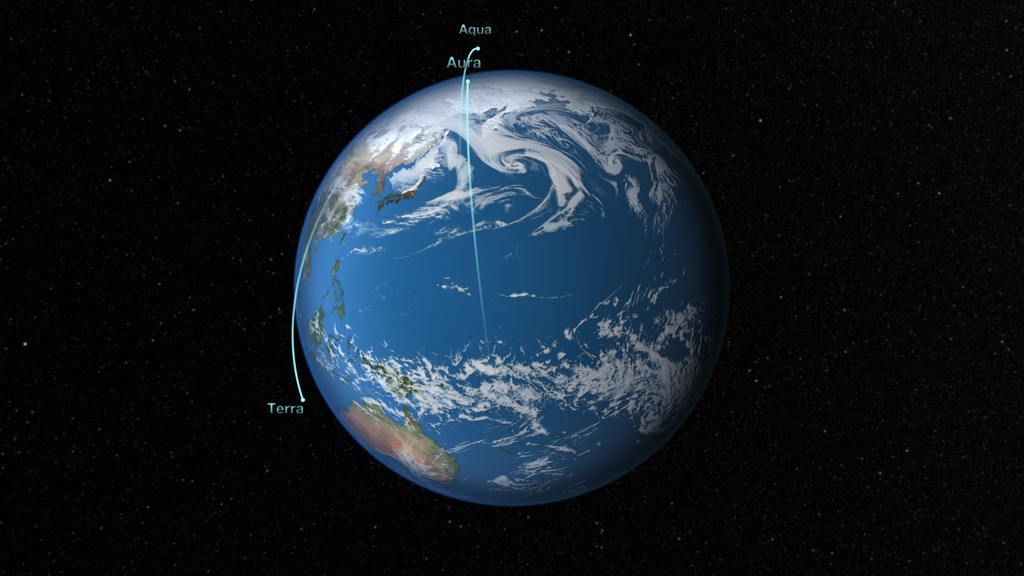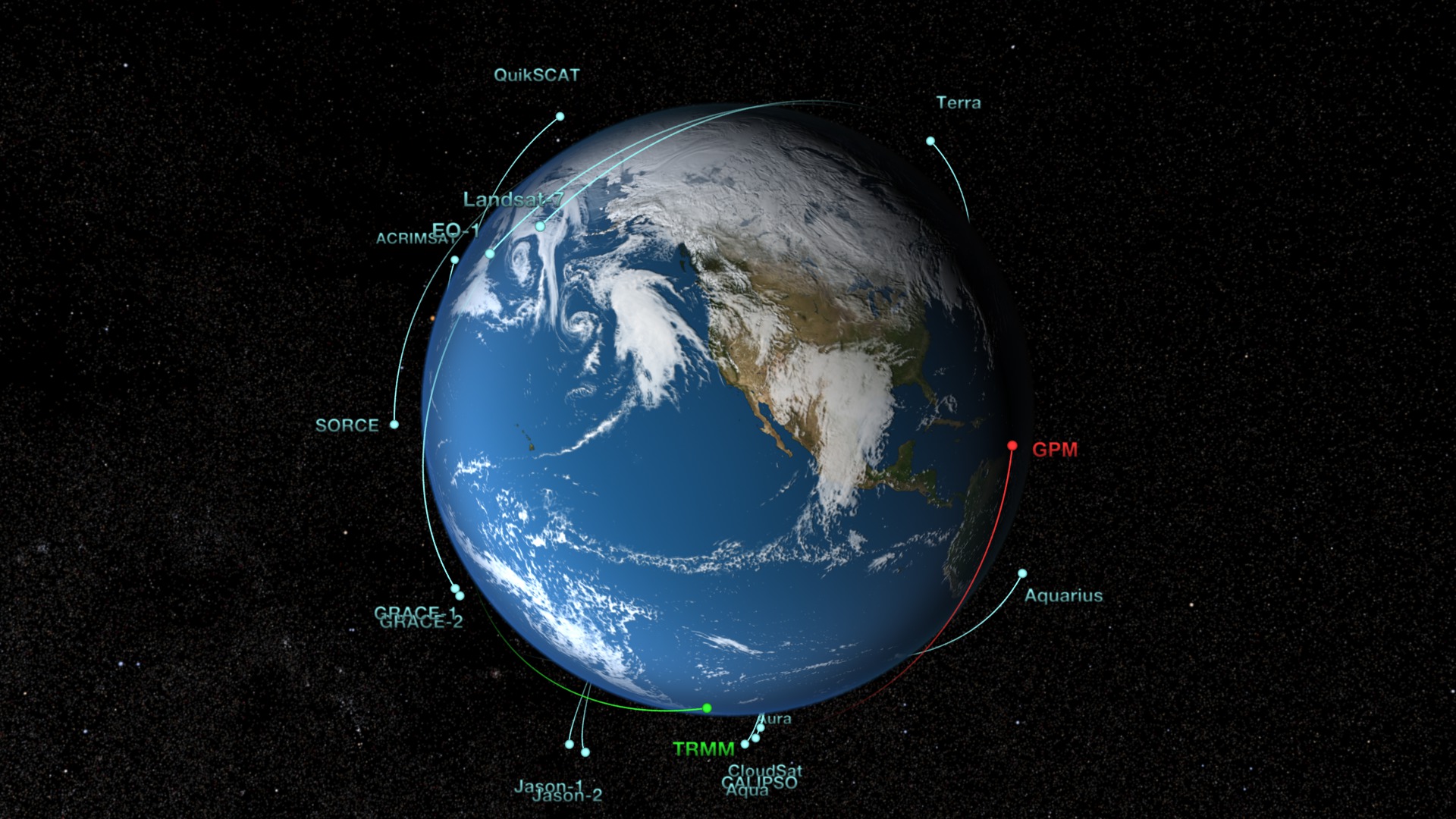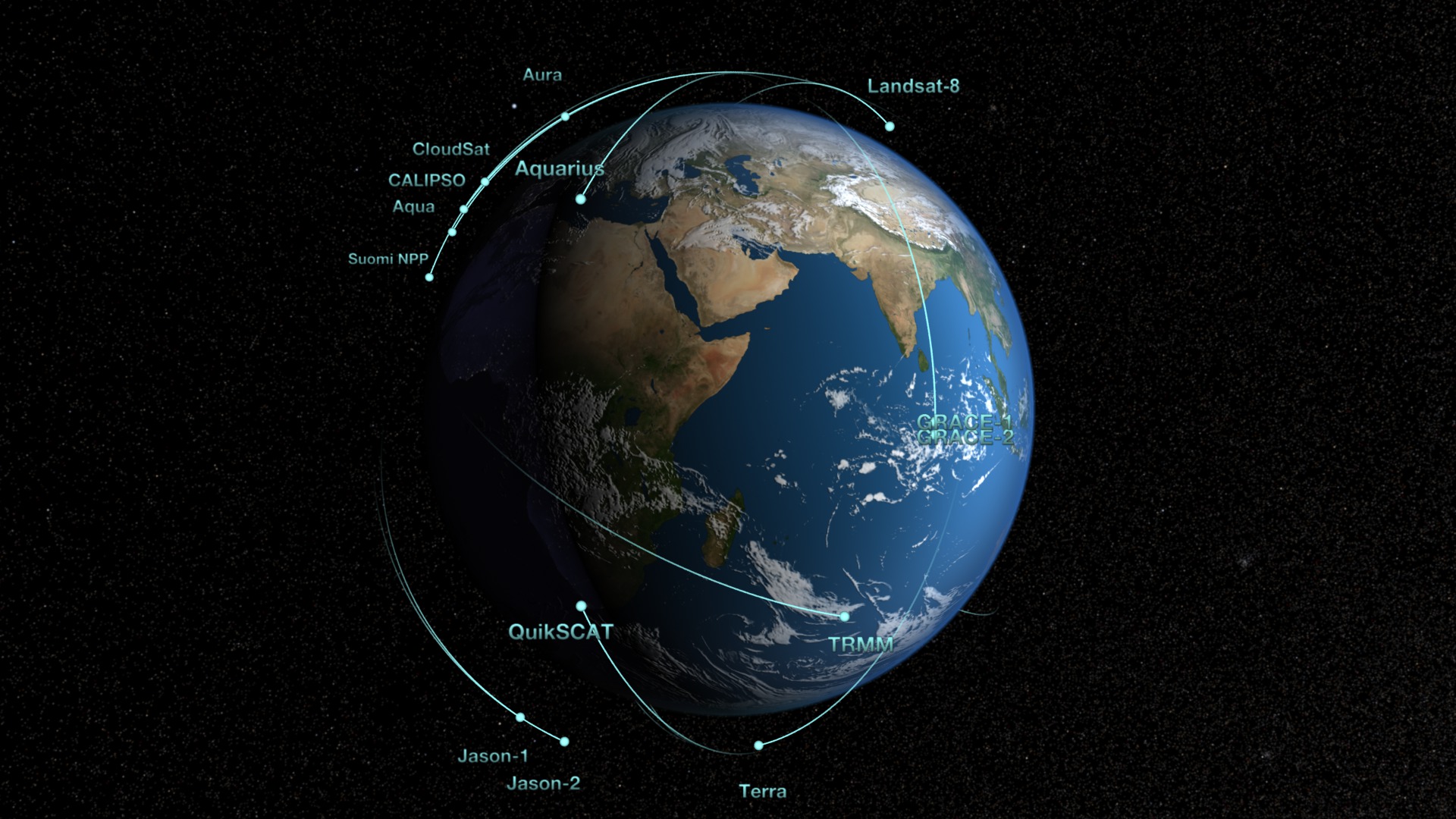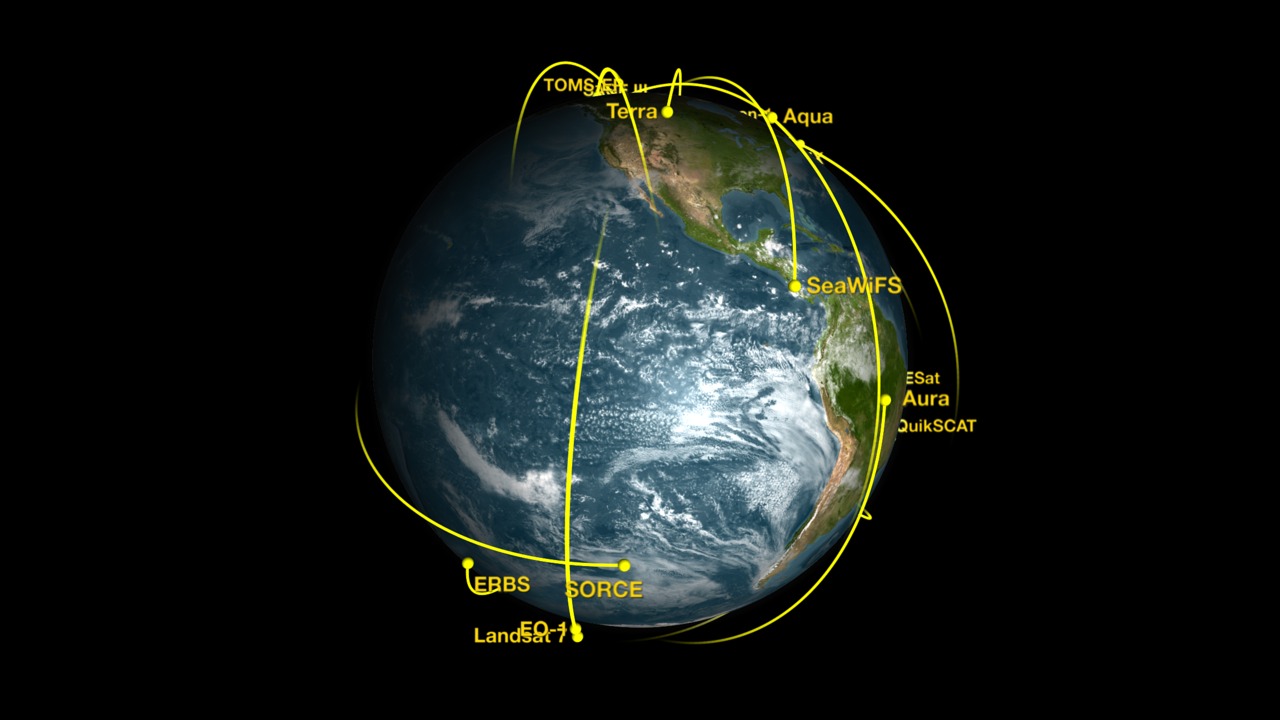Earth Observing Fleet (January 2023)
Earth observing fleet for January 2023
This animation shows the orbits of NASA's fleet of Earth observing spacecraft as of January 2023. NOAA-20, NOAA-21, GOES-14, GOES-15, GOES-16, GOES-17 are also included in this version.
Spacecraft included:
• Aqua
• Aura
• CALIPSO: Cloud-Aerosol Lidar and Infrared Pathfinder Satellite Observation
• CYGNSS-1: Cyclone Global Navigation Satellite System 1
• CYGNSS-2: Cyclone Global Navigation Satellite System 2
• CYGNSS-3: Cyclone Global Navigation Satellite System 3
• CYGNSS-4: Cyclone Global Navigation Satellite System 4
• CYNGSS-5: Cyclone Global Navigation Satellite System 5
• CYGNSS-6: Cyclone Global Navigation Satellite System 6
• CYGNSS-7: Cyclone Global Navigation Satellite System 7
• CYGNSS-8: Cyclone Global Navigation Satellite System 8
• Cloudsat
• GOES-14
• GOES-15
• GOES-16
• GOES-17
• GPM: Global Precipitation Measurement
• GRACE-FO-1: Gravity Recovery and Climate Experiment Follow On-1
• GRACE-FO-2: Gravity Recovery and Climate Experiment Follow On-2
• ICESat-2
• ISS: International Space Station
• Landsat 8
• Landsat 9
• NOAA-20
• NOAA-21
• OCO-2: Orbiting Carbon Observatory-2
• SMAP: Soil Moisture Passive Active
• Suomi NPP: Suomi National Polar-orbiting Partnership
• Sentinel-6 Michael Freilich
• SWOT
• Terra
The clouds used in this version are from a high resolution GEOS model run at 10 minute time steps interpolated down to the per-frame level. The timeframe for this model does not match the date in this fleet visualization, so the clouds shown do not represent actual conditions for Jan 10, 2023.
Credits
Please give credit for this item to:
NASA's Scientific Visualization Studio
-
Visualizers
-
Kel Elkins
(USRA)
-
Greg Shirah
(NASA/GSFC)
-
Kel Elkins
(USRA)
Datasets used
-
CelesTrak Spacecraft Orbit Ephemeris
ID: 454This dataset can be found at: http://celestrak.com
See all pages that use this dataset
Note: While we identify the data sets used on this page, we do not store any further details, nor the data sets themselves on our site.
Release date
This page was originally published on Thursday, January 12, 2023.
This page was last updated on Monday, June 23, 2025 at 12:15 AM EDT.

